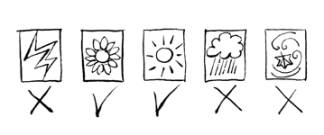The Pearls of Life:
101 Simple Ways to Health and Happiness
Give Yourself Psychotherapy Sessions
 I
think, therefore I feel.
I
think, therefore I feel.
There are
different kinds of psychotherapies. The image of a person freely
associating on a couch to a therapist is mostly
attributed to psychoanalysis, which was started by Freud.
There is another psychotherapy that I have found helpful with my patients, as well as in my personal life. It is cognitive therapy, a most powerful tool.
Cognitive therapy is now used often to combat depression and anxiety. It has been shown to be as effective as medication treatment for mild to moderate depression. If used correctly, it can possibly change our core beliefs about the world and ourselves.
Cognitive therapy is usually done with a therapist. But I find that we can apply the same principles for our personal use. It is good for managing our everyday blues and preventing the small blues from turning into oppressing monsters.
The idea behind cognitive therapy is that our thoughts help determine our moods. Changing a thought arising from a given situation will change mood. The mood change then changes the behaviors and physical reactions that come with it. Those of us who are motivated and have the capacity to look inside ourselves benefit most from this technique.
This is how it works. I first look at a negative reaction that I may have to a situation. I entertain the possibility that my perception and interpretation of the situation may be false—colored by my past experiences, my genes, or something inherent in my biological makeup.
With this possibility, I recognize that these false perceptions and interpretations have led to the negative thoughts.
After I realize that my initial automatic negative response may not be based on reality, I try to look beyond the surface. I explore other possible perceptions and interpretations that more closely reflect the reality.
In the end, I decide whether the evidence supports the negative thought or one of the more positive ones. Ideally, I will come to realize that my initial negative perception and interpretation are distorted. Eventually I “reframe” the situation, using the more positive alternative response.

- Try to use the above technique.
- Work with a therapist if you find it easier to have someone else help you with this technique. Each of us has different talents. Even the smartest person may need the expertise and guidance of a professional.
- Consult friends or family you trust as a sounding board.
-
Check
out Feeling Good Handbook by David D Burns.